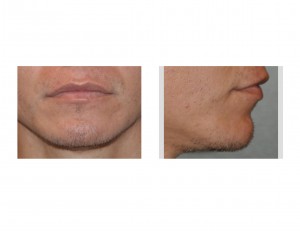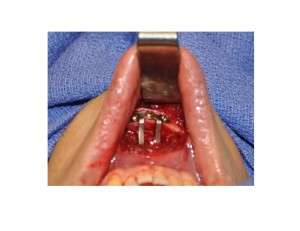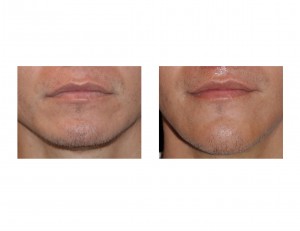Background: The chin is one of the facial prominences and the most noticeable part of the lower jaw. Horizontal chin shortness has been recognized for many decades and has largely been improved through the use of synthetic implants. Placing an implant on the front edge of the bone is a simple and relatively uncomplicated method of horizontal increase.
Great results can be seen in many profile examples of chin implant augmentation but the chin and the face is more than just a side view. Patients see themselves more commonly in the front view and this perspective is becoming appreciated in chin surgery.The other dimensions of vertical length and transverse width have greater impact in the frontal view and also have an impact on chin appearance. Since a strong chin is a well recognized male facial characteristic, the chin should be enhanced from three-dimensional changes.

Given the needed changes to achieve a more pleasing three-dimensional change, it was decided that it could not be predictably done by a bigger implant. An implant could not provide enough vertical length improvement. An osteotomy was planned to not only make these desired changes but to replace what the existing implant has already created.



Case Highlights:
1) Changing the shape of the chin is more than just about horizontal advancement. Vertical length and width of the chin must also be considered for the best aesthetic result.
2) Mild vertical lengthening of the chin can be done with an implant that is secured on the inferior edge of the bony chin.
3)When more than a few millimeters of chin lengthening is needed, an opening osteotomy is best. It can be done to only lengthen the chin or bring it forward as well as with a vertical increase.
4)When a chin implant has failed to achieve the desired aesthetic outcome, a chin osteotomy can be considered which offers greater options for some chin changes.
Dr. Barry Eppley
Indianapolis Indiana


